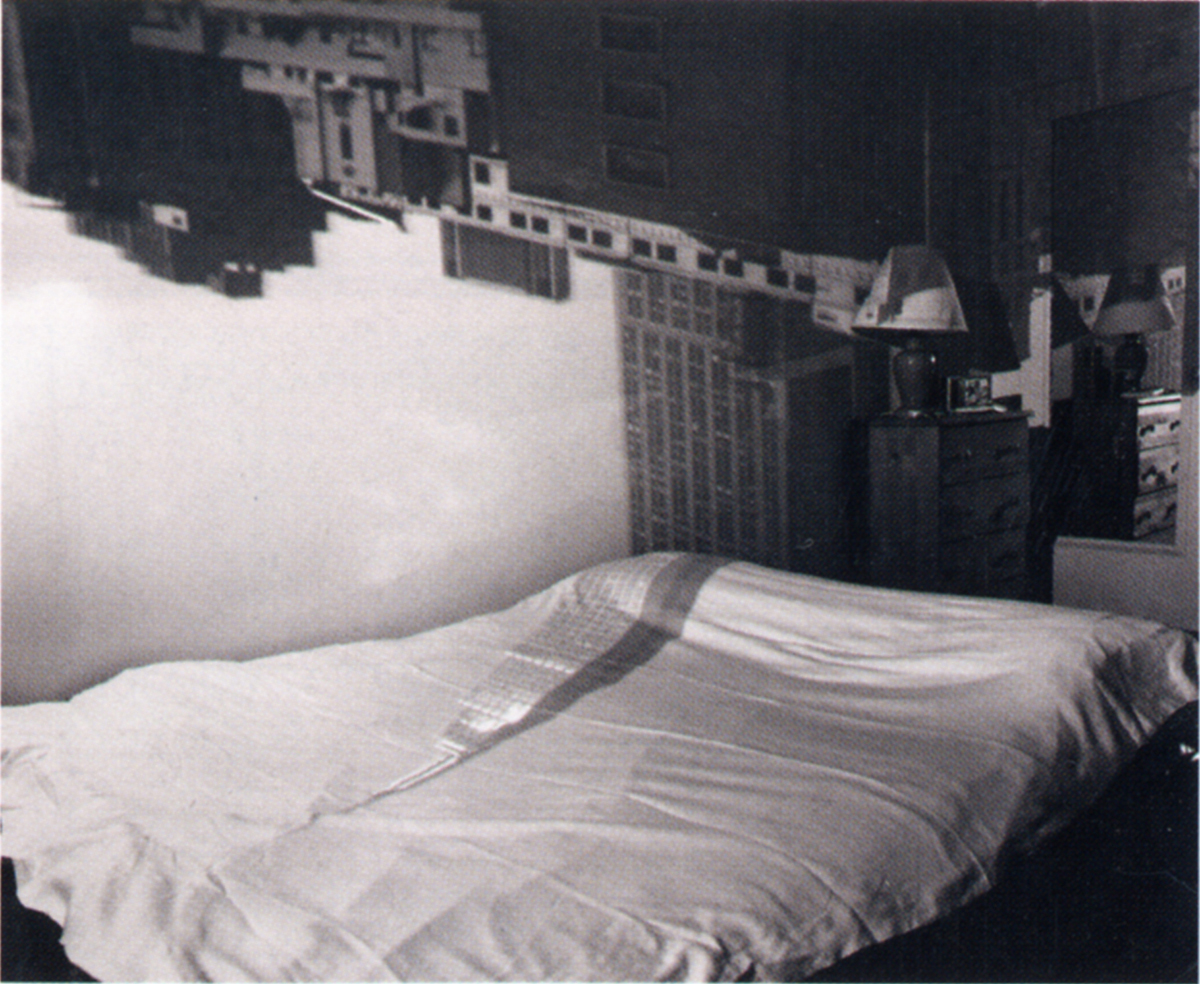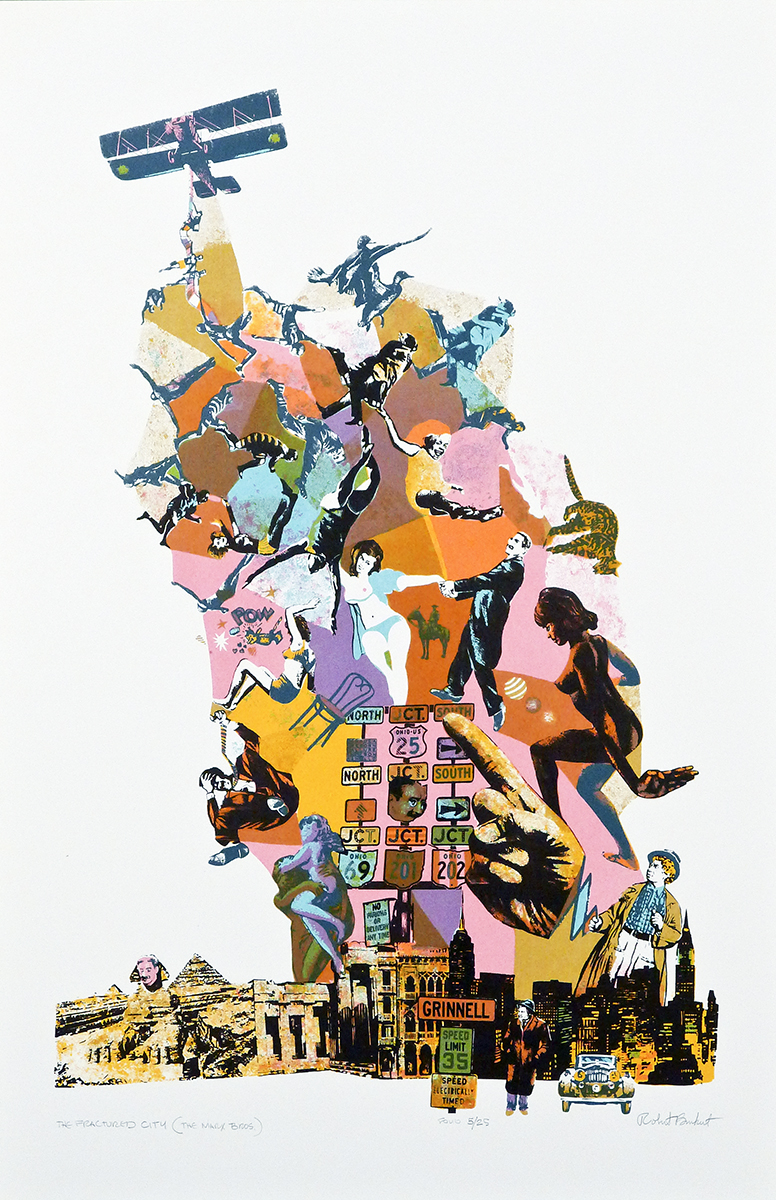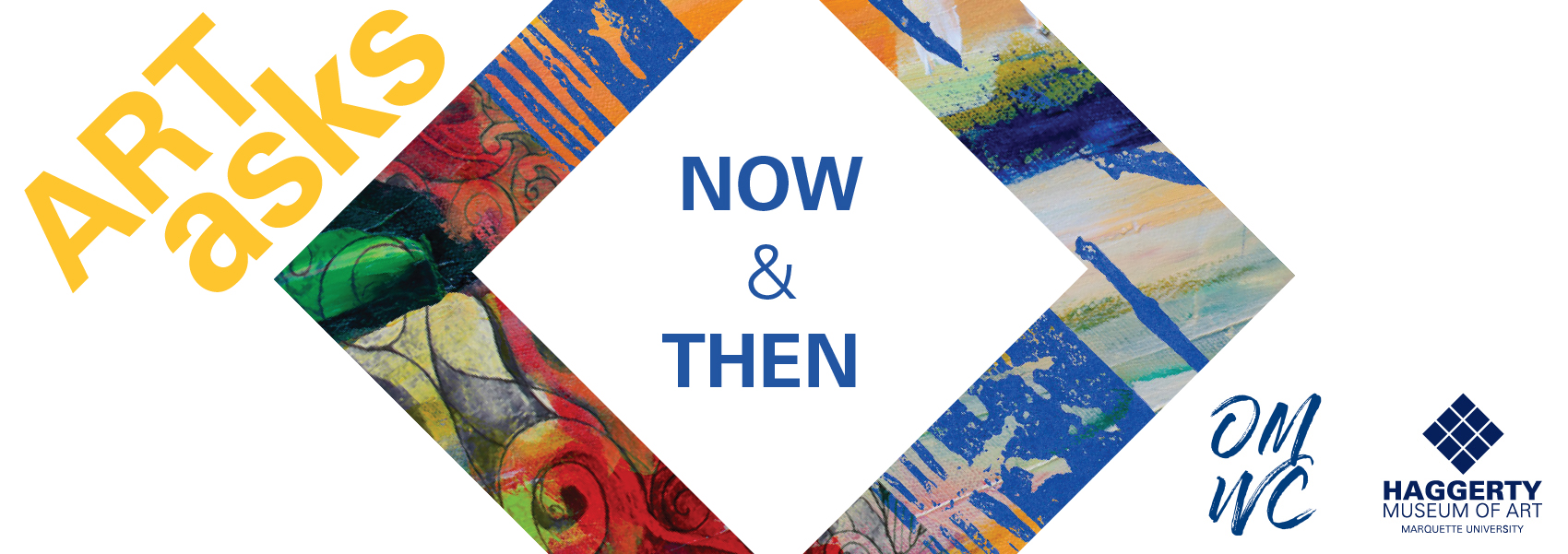
Abelardo Morell (Cuban, b. 1948), The Empire State Building in Bedroom, 1994/2009

Robert Burkert (American, b. 1930), The Fractured City (The Marx Brothers), from the series The Screen Comedians 1966-1967
Art has unique ways of transforming familiar scenes and objects into something new and unexpected—and even momentarily unrecognizable. Both now and then, artists have used this aspect of art for a variety of purposes: to commemorate, to critique, and to make us pause and reflect on what we see.
This month, we make the city and city skylines our focus with two prints by two different artists. The Empire State Building in Bedroom is a gelatin silver print by photographer Abelardo Morell, who was born in Cuba but emigrated to New York City with his parents in 1962, when he was 14 years old. Ten years later, the World Trade Center opened, boasting the world’s tallest buildings at the time: 1 World Trade Center, known as the North Tower, which was 1,368 feet high, and 2 World Trade Center or the South Tower, which was 1,362 feet high. Each had 110 floors.
Morell remembers being overwhelmed by skyscrapers when he first arrived in New York, and his depiction of the Empire State Building evokes related feelings. By contrast, The Fractured City (The Marx Brothers) by Robert Burkert offers a riot of color and motion. Burkert was initially from Racine, WI, and many of his early works were influenced by pop art as well as the time he spent drawing comic strips for the Chicago Tribune. His serigraph or silkscreen print captures a patchwork of images from urban life, including road signs and the famous vaudeville comedians, the Marx brothers.
Art Asks: Now & Then
Post and tag your writing with #ArtAsks #HMA #OttWC
Prompt 1 (5-10 minutes)
Abelardo Morell is known for employing camera obscura (Latin for “dark room”) techniques to create uncanny photographs in which it seems like the world has been turned upside down. This is one way that he transforms the familiar into something strange. As Morell himself explains:
I made my first picture using camera obscura techniques in my darkened living room in 1991. In setting up a room to make this kind of photograph, I cover all windows with black plastic in order to achieve total darkness. Then, I cut a small hole in the material I use to cover the windows. This opening allows an inverted image of the view outside to flood onto the back walls of the room. Typically then I focused my large-format camera on the incoming image on the wall then make a camera exposure on film.
With Morell’s description of his camera obscura technique in mind, focus on his print and try the following:
- (5 minutes) Set a timer and spend 5 minutes looking intensively at The Empire State Building in Bedroom. Try not to look away for the whole 5 minutes. As you look, imagine inhabiting the topsy-turvy space the print portrays. What happens to you as you look? Do you start to feel at home in the image? Do you get vertigo? Share your experience on Twitter: #ArtAsks #HMA #OttWC.
- (5 minutes) Think about a place you know well, one that you can picture in your mind’s eye or remember in detail. What do you imagine this place would look like as seen through a camera obscura? Set a timer and (a) treat this prompt as a meditation by closing your eyes and envisioning the place you picked in your imagination, (b) write a description of what you imagine, or (c) draw what you envision. Don’t forget to share the results with the Haggerty and the Ott via email or on Twitter: #ArtAsks #HMA #OttWC.
*Bonus prompt: Create a camera obscura, photograph what it enables you to see and share your picture(s) with the Haggerty and the Ott via email or on Twitter: #ArtAsks #HMA #OttWC.
Prompt 2 (5-10 minutes)
Like Morell, Robert Burkert takes mundane subjects and transforms them to create something new. Instead of using a camera obscura, Burkert remixes images of familiar people and places, mashing them up together to form something new. His interest in comics comes through, as does his knowledge of drawing, printmaking, and painting. His style invites different kinds of looking. Try out one or two below:
- (5 minutes) Set a timer for 5 minutes and play the Burkert identification game by seeing how many different figures, images, and symbols you can find The Fractured City (The Marx Brothers). Make a list and share it with the Haggerty and the Ott via email or on Twitter: #ArtAsks #HMA #OttWC.
- (5 minutes) Set a timer for 5 minutes and focus on the The Fractured City (The Marx Brothers) as a whole. Notice how it draws your attention: Do your eyes move left to right or up and down? Overall, how does it make you feel? And how would you describe the collective impact of the different pieces and parts? What do you think the artist was trying to communicate: an embrace of chaos, a mix of confusion and humor in the face of social and cultural change, or something else?
*Bonus prompt: Individually, with classmates, or with friends and family, collect 25+ contemporary images, symbols, and/or objects, and then create a contemporary version of The Fractured City (The Marx Brothers). Your work can be digital or physical, and you can share it (or pictures of it) with the Haggerty and the Ott via email or on Twitter: #ArtAsks #HMA #OttWC.
Prompt 3 (5-15+ minutes)
In The Empire State Building in Bedroom Morrell plays with opposites. He reverses up and down, and he juxtaposes inside (bedroom) and outside (the Empire State Building). He also plays with time by making a print in 2009 out of a picture from 1994. Let’s look more closely at some of Morrell’s opposites and how they work:
- (5 minutes) Set a timer and spend 5 minutes looking at—and for—the boundaries between in and out within The Empire State Building in Bedroom. How do you know this is an interior space? Can you see where the interior space ends and the projection begins? What other ways can you distinguish inside from outside in this print?
- (5 minutes) There is a gap of 15 years between Morrell’s photograph (1994) and his print of the photograph (2009), and there is a gap of 12 years between the print and today in 2021. Although the image itself may not discernibly change, the world around it does. Set a timer and spend 5 minutes describing some of the changes that have taken place between 1994 and today. Reflect on how those changes might affect the way we see Morrell’s work.
- (5+ minutes) Extending the activity immediately above, imagine a dialogue or story that involves at least 3 people: someone who saw Morrell’s original photograph in 1994; someone else, who saw Morrell’s print in 2009; and someone else, who sees the print in 2021. We invite you to share what you write via email with the Haggerty and the Ott .
Prompt 4 (5-15+ minutes)
In the spirit of “Now & Then,” which is the theme for Art Asks this semester, consider the period in which Burkert’s print was made. The late 1960s was a tumultuous era in the United States and around the world. The end of the decade ushered in civil rights reforms and countercultural movements that profoundly impacted society. It was a defining time for the twentieth century, much like 9/11 was a defining moment in the twenty-first century. Think about what it means to define an era or a century, and then try the activities below:
- (5 minutes) Set a timer for 5 minutes and spend the time deciding which 3 symbols or images are the most important and why. Share your thoughts with us on Twitter: #ArtAsks #HMA #OttWC.
- (5 minutes) Pick a period of time other than the late twentieth and early twenty-first centuries. Set a timer and write a list of the images or symbols you would include to represent the era you have selected. Explain your choices, and share your list with us on Twitter: #ArtAsks #HMA #OttWC.
- (5 minutes) Spend at least 5 minutes reviewing the lists you made for prompts 4.1 and 4.2 above. If you did these activities with others, share lists with each other and consider what they reveal about how you define periods of time. What similarities do you see across lists? What kinds of things are missing? And what does that say about what you (individually or collectively) consider significant or representative?
Prompt 5 (5-15 minutes)
Both Morell and Burkert were thinking about the urban environment, cityscapes, and human experience. In his photograph, Morell made the towering New York skyline precious and human-scaled. Burkett’s screenprint created a fractured city skyline–something monumental–out of individual people and cultural touchstones.
In 2021, human experience is shaped by ongoing pandemics: coronavirus, white supremacy, and climate crises. Human experience is also shaped by the legacies of past events. This year is the 500th anniversary of Martin Luther’s excommunication from the Catholic church. It is the 245th anniversary of the first War Memorial authorized by the United States Congress. It is the 75th anniversary of the first United Nations (UN) meeting. It is the 50th anniversary of the Apollo 14 launch to the moon. It is the 20th anniversary of 9/11.
- (5 minutes) Consider one of the major events listed above or another of equal import that we can look back on today. Then set a timer for 5 minutes and consider how, as an artist, you would choose to represent whatever you chose. What medium would you use? What materials and techniques. Feel free to write descriptively about your ideas or sketch them. Be sure to also explain your choices, and share the results with the Haggerty and the Ott via email or on Twitter: #ArtAsks #HMA #OttWC.
- (5 minutes) Consider your personal history, thinking about what has profoundly shaped your life experience so far. Then set a timer for 5 minutes and consider how, as an artist, you would represent whatever you consider to be a major influence on you. What medium would you use? What materials and techniques. Feel free to write descriptively about your ideas or sketch them. Be sure to also explain your choices, and share the results with the Haggerty and the Ott via email or on Twitter: #ArtAsks #HMA #OttWC.
- (5 minutes) Take 5 minutes to keep working on 5.1 or 5.2, giving yourself a chance to further play with and develop your ideas. What happens: anything good? Anything surprising. Feel welcome to share the results with the Haggerty and the Ott via email or on Twitter: #ArtAsks #HMA #OttWC.




